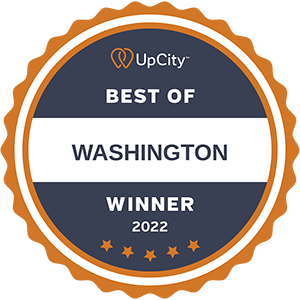SEO Techniques in 2023
As we delve into the intricacies of “The Evolution of SEO Techniques – What’s New in 2023?” it’s clear that the landscape for search engine optimization is ever-evolving. Technological advancements, shifts in user behavior, and updates to Google’s algorithm are just a few factors that continue to reshape our understanding and application of SEO strategies.
This comprehensive exploration examines key areas such as adapting to Google’s latest algorithm updates and optimizing websites for mobile usage. We’ll delve deeper into leveraging long-tail question keywords and discuss emerging trends like YouTube video optimization practices.
The importance of E-A-T (Expertise-Authoritativeness-Trustworthiness) in today’s SEO world cannot be overstated. We will also explore how AI integration has become vital to an effective SEO strategy.
Adapting to Google’s Algorithm Updates
In 2023, Google’s algorithm updates are all about improving user experience and considering author expertise—time to shake up your SEO game.
Prioritizing Quality Over Quantity in Content Creation
Forget mass-producing content. Focus on creating top-notch material that adds value. Search Engine Land emphasizes the potential of crafting high-quality content to improve visibility and SERP rankings.
The Importance of Author Expertise in Ranking
The concept of author expertise comes from Google’s Search Quality Evaluator Guidelines, which discuss the concept of E-A-T: Expertise, Authoritativeness, and Trustworthiness. These are factors that Google’s human evaluators consider when assessing the quality of a webpage.
Expertise refers to the knowledge or background of the author in a specific field. This is especially important for YMYL (Your Money or Your Life) topics—those that could potentially impact a person’s health, finances, safety, or happiness. Google expects authors to have appropriate credentials or demonstrated knowledge of these topics.
While it’s unclear exactly how much Google’s algorithms consider an author’s expertise when ranking pages, Google has stated that E-A-T is an important part of its algorithms.
From an SEO perspective, here’s why author expertise can be important:
- Content Quality: Expert authors are more likely to produce high-quality, accurate content. This can help meet Google’s goal of providing users with reliable and valuable information.
- Reputation: Authors with established expertise can help boost a site’s reputation. Google’s guidelines mention that the author’s reputation is a factor that evaluators should consider.
- Link Building: Expert content can attract more backlinks from reputable sources, improving a site’s authority and SEO performance.
- Trust and Credibility: Showcasing the expertise of your authors can help build trust and credibility with your audience, which can increase engagement and potentially improve SEO performance.
- Lower Risk of Penalties: Sites that publish inaccurate or misleading information, especially on YMYL topics, risk penalties from Google. Having expert authors can help avoid this.
To emphasize author expertise, you could include author bios on your site highlighting each author’s credentials, experience, and knowledge. Linking to an author’s social media or professional profiles can also help.
Stay ahead of the game in 2023 with these SEO tips: prioritize quality content, showcase author expertise, and adapt to Google’s algorithm updates.
Optimizing Websites for Mobile Usage
In 2023, the digital world has gone mobile. With Google’s mobile-first indexing approach, your website better be ready for the small screen.
Understanding Google’s Mobile-First Indexing Approach
Google’s “mobile-first” indexing refers to a fundamental shift in the way that Google organizes and ranks the content on the internet. It means that Google predominantly uses the mobile version of the content for indexing and ranking pages.
Historically, Google’s crawling, indexing, and ranking systems have used the desktop version of a page’s content. However, as most users now access Google Search with a mobile device, Google decided to switch to mobile-first indexing to serve this majority better. This switch began in 2016 and was implemented for all websites in March 2021.
Here’s what this means for website owners and developers:
- Mobile Compatibility: If a site doesn’t have a mobile-friendly version, it could suffer in search rankings. That’s because the site may not look as good or provide as good of a user experience on mobile, which is what Google is now using for its index.
- Content Parity: If the mobile version of a site has less content than the desktop version, that could also lead to ranking issues. With mobile-first indexing, Google won’t see the desktop content that isn’t on the mobile site.
- Structured Data and Metadata: Structured data and metadata should be consistent across both versions of your site. Since Google will use the mobile version for indexing, any important SEO-related markup must be on the mobile site.
- Performance: Page load speed and usability on mobile devices are critical. A slow or poor-performing mobile site could hurt rankings.
It’s worth noting that Google still uses a single index for serving search results, and mobile-first indexing doesn’t generate a separate mobile index. The term “mobile-first” refers to the fact that the mobile version of a website is considered the primary version in the eyes of the Googlebot.
Techniques for Optimizing Websites for Mobile Usage
- User-friendly design: Make sure your site is easy to navigate on tiny screens.
- Faster load times: Optimize images and ditch heavy scripts that slow mobile loading.
- Tappable elements: Buttons and links should be big enough to tap without zooming or finger gymnastics.
An optimized website gives users a better experience and boosts your visibility on search engine results pages (SERPs). It’s a must-have for any SEO strategy in 2023.
Stay ahead of the game in SEO. Optimize your website for mobile usage to boost visibility and improve user experience.
Leveraging Long-Tail Question Keywords
In 2023, one of the biggest challenges for marketers is finding those fancy long-tail question keywords. These little gems can boost your website’s visibility and bring in the right traffic.
The Importance of Long-Tail Question Keywords in SEO
Long-tail question keywords are like the secret sauce of a killer SEO strategy. They help you target a specific audience closer to making a purchase. When people ask detailed questions in search engines, it’s a sign they’re serious about buying.
Strategies to Find Awesome Long-Tail Question Keywords
- Get friendly with keyword research tools: Tools like Google Keyword Planner or SEMrush can give you the lowdown on popular long-tail queries related to your business.
- Spy on your competitors: Take a peek at what questions your competitors are answering. It might spark some fresh ideas for your own content.
- Ask your customers: Conduct surveys to determine your customers’ questions about your product or service. Their answers will be gold for creating relevant content.
To make the most of long-tail keywords, focus on creating top-notch answers that satisfy user intent and boost your search engine optimization (SEO) game.
YouTube Video Optimization Practices
In 2023, SEO has gone video. YouTube is now a hot spot for optimizing your content. Making your content discoverable and accessible is essential for success in SEO 2023.
Optimizing your YouTube videos is crucial to get more visibility and reach more viewers.
Here are some best practices to optimize your YouTube videos:
- Video Title: Use a descriptive and compelling title with your main keywords. The title should give the viewer a good idea of what the video is about and entice them to click.
- Description: Use the video description to provide a detailed summary of your video content, include relevant keywords, and provide links to your website or social media profiles. The first few lines are especially important because they’re visible in YouTube’s search results and under the video on the watch page.
- Video Thumbnail: Use a custom thumbnail that represents your video content well and draws the viewer’s attention. The thumbnail and the title can significantly impact your video’s click-through rate.
- Closed Captions and Subtitles: Adding closed captions or subtitles can improve accessibility and help reach a wider audience. They can also boost SEO by providing additional text indexed by YouTube.
- Cards and End Screens: Use cards and end screens to promote other content, encourage viewers to subscribe, or link to an approved website.
- Engagement: Encourage viewers to like, comment, share, and subscribe at the end of the video. Engagement metrics can influence YouTube’s recommendation algorithm.
- Video Quality: High-quality video and sound can improve viewer experience and potentially impact your video’s performance. YouTube also supports 4K and HDR video, making your content more attractive on high-end screens.
- Playlists: Group related videos into playlists. This can encourage viewers to spend more time on your channel and help YouTube understand more about your video content.
- Channel Optimization: Don’t forget to optimize your overall YouTube channel. Have a detailed and keyword-rich ‘About’ section, a channel trailer to introduce yourself, and a consistent branding theme.
- Add Chapters: They help viewers navigate your video like a boss. Closed captions are a must-have too. They make your content inclusive and give search engines extra context. And don’t forget about titles, tags, and descriptions – they should be keyword-rich and on point.
Remember, the most crucial factor is creating valuable, entertaining, or informative content viewers want to watch. The above techniques are secondary to producing great content that resonates with your audience.
Boost your video’s visibility and engagement with YouTube SEO techniques in 2023. Add chapters, captions, and keyword-rich titles for an awesome viewer experience.
Emphasizing E-A-T (Expertise-Authoritativeness Trustworthiness)
In 2023, Google’s E-A-T algorithm update is more crucial than ever. It penalizes sites with spammy links or unnatural link profiles, making customer reviews invaluable for higher conversion rates.
Understanding the impact of EAT principles on site rankings
EAT stands for Expertise, Authoritativeness, and Trustworthiness – three factors Google uses to evaluate website quality. Sites with high levels of these attributes tend to rank better. So, build your online reputation through genuine customer feedback and positive reputation management.
The role customer reviews play within the EAT framework
Customer reviews, especially those showcasing real experiences, and outcomes, can significantly boost your business’s credibility. Encouraging honest feedback can be a powerful strategy for enhancing your site’s SEO performance.
Discover the latest SEO techniques for 2023. Learn how customer reviews and E-A-T principles can boost your site’s rankings.
AI Integration into SEO Strategy
In 2023, Artificial Intelligence (AI) has become the SEO superhero, revolutionizing how we optimize websites. With AI’s help, we can now create short, sweet, and keyword-rich FAQs, thanks to language models like BARD.
The Marvelous Benefits of AI in SEO
Integrating Artificial Intelligence (AI) into SEO strategies can offer several benefits. These include:
- Improved Keyword Research: AI tools can conduct extensive keyword research, going beyond simple keyword suggestions to understand the intent and context behind certain searches. These tools can analyze vast amounts of data and identify new keyword opportunities that may be overlooked in manual research.
- Content Optimization: AI can help optimize content by suggesting improving readability, keyword usage, and structure. It can also analyze high-ranking content to provide insights into what content performs well for certain keywords or topics.
- User Experience (UX) Optimization: AI can analyze user behavior data to provide insights into how users interact with a site and where improvements can be made. This can help enhance the overall user experience, an important factor in SEO.
- Automated Tasks: AI can automate repetitive SEO tasks such as reporting, site audits, and tag management. This can save time and allow SEO professionals to focus more on strategic tasks.
- Predictive Analysis: AI tools can use machine learning to predict trends or changes in user behavior, helping businesses to stay ahead of the curve.
- Personalization: AI can analyze user data to provide personalized content recommendations, improving user engagement and potentially boosting SEO performance.
- Voice Search Optimization: As AI-powered voice assistants like Google Assistant, Alexa, and Siri become more popular, AI tools can help optimize content for voice search.
- Link-Building: Some AI tools can identify high-quality backlink opportunities, saving much of the manual work involved in link-building.
- Competitor Analysis: AI can quickly analyze a competitor’s website and SEO strategy, providing valuable insights to inform your strategy.
- Semantic Search: AI and machine learning algorithms can help businesses adapt to the evolution of semantic search, where search engines better understand the context and intent of search queries.
Real-Life Examples of AI in Action
- E-commerce sites: Online retailers use AI-powered chatbots to provide top-notch customer service and personalized product recommendations. It’s like having a virtual shopping assistant.
- Blogging platforms: Content creators are harnessing the power of AI tools for keyword research and topic generation. With AI, they can create blog posts that hit the bullseye every time.
Discover how AI revolutionizes SEO in 2023, boosting website visibility and user engagement.
Mitigating Spam Results Through NLP Features
In 2023, Google’s SpamBrain algorithm is kicking spam’s butt. It uses fancy natural language processing (NLP) features to keep those pesky spam results out of SERPs. No more shady tactics, folks.
How SpamBrain Algorithm Works
SpamBrain algorithm is like a detective, analyzing content for signs of manipulation or unnatural patterns using NLP. It can spot keyword stuffing and hidden text from a mile away. Sneaky, sneaky.
Google strongly leverages sophisticated machine learning and Natural Language Processing (NLP) capabilities to improve its understanding of search queries and web content. NLP helps Google’s algorithms better understand the context, intent, and nuances of language, which can greatly aid in identifying and filtering out spammy or irrelevant content.
Consequences of Unethical Link-Building
Don’t be a shady site. If you get caught using unethical link-building tactics, Google will bring the hammer down. Say goodbye to high rankings or even being in Google’s index. Yikes. Stick to the straight and narrow, folks.
For more tips on playing nice with Google, check out Google’s Webmaster Guidelines. They know what’s up.
Stay ahead of the game in SEO. Google’s SpamBrain algorithm is using NLP to kick spam out of SERPs. No more shady tactics, just quality content.
Topic Clusters: The Google Update You Need to Know
In 2023, Google’s Helpful Content Update spotlighted topic clusters and author bios in SEO. Let’s dive into these important aspects.
The Power of Topic Clusters in Today’s SEO Landscape
A topic cluster model is a web of interconnected articles or pages centered around one main “pillar” content. This helps organize your website and boosts your visibility on search engine results pages (SERPs).
The concept of topic clusters revolves around creating a more interconnected and logical architecture on your website to provide comprehensive coverage of a specific topic. This approach aims to enhance content relevance, improve user experience, and boost SEO performance.
Here’s how it works:
- Pillar Content: This is a comprehensive piece of content that covers a broad topic in depth. It acts as the main hub of information.
- Cluster Content: These are related but more specific content that covers individual subtopics. Each piece of cluster content links back to the pillar content, and the pillar content links out to each piece of cluster content.
- Hyperlinking: A key part of this model is using hyperlinks to connect the pillar content with each piece of cluster content. This creates a network of interrelated content that’s easy for users (and search engines) to navigate.
This approach is based on the understanding that search engines like Google have evolved to better understand semantic relationships between topics and prefer sites offering comprehensive coverage. It can help position your site as a trusted authority on a particular subject, improving your chances of ranking higher in search results.
Remember that while topic clusters are widely discussed in SEO circles, Google’s algorithms are highly complex and consider many factors when determining search rankings. It’s always a good idea to follow a variety of SEO best practices and to focus on creating high-quality, valuable content for your users.
Conclusion
The SEO game is always changing, so businesses better keep up or get left behind.
Create killer content, optimize for mobile, target those long-tail question keywords, and don’t forget about E-A-T principles.
AI is the future, so embrace it and use natural language processing to fight spam.
Video marketing and image optimization are must-haves for a strong online presence.
Don’t forget topic clusters to show you mean business.













